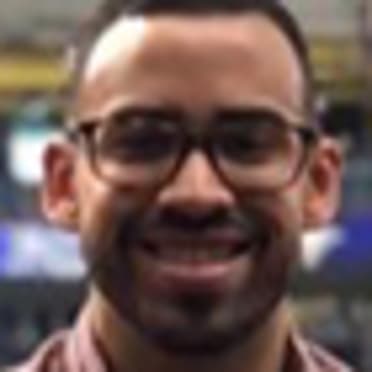How Pujols fits into Dodgers' plans
LOS ANGELES -- When Albert Pujols, Dodgers manager Dave Roberts and Dodgers president of baseball operations Andrew Friedman spoke to the media on Monday, all three talked about how important the communication between them was during the negotiations.
Friedman and Roberts wanted to make it clear what Pujols’ role would be on the Dodgers, and the future Hall of Famer wanted to hear a good “game plan” from a team as he made his decision.
That communication is what they hope leads to a good partnership. Let’s take a look at why the Dodgers made the decision to sign Pujols and where he’ll fit.
Where’s the fit?
When the Angels designated Pujols for assignment on May 6, the Dodgers were certainly not one of the obvious landing spots for the 41-year-old slugger.
The Dodgers have Max Muncy as their everyday first baseman, and there’s no designated hitter in the National League. But one thing the Dodgers did need was a right-handed bat who could come off the bench or make the occasional start at first base. The Dodgers wasted no time in showing that, as Pujols hit cleanup on Monday against D-backs left-hander Madison Bumgarner, picking up his first RBI with a third-inning single in the Dodgers' 3-1 victory.
Los Angeles has struggled to hit southpaws over the past few seasons, and that’s no different in 2021. L.A. entered Monday’s game hitting .259 with a .793 OPS against righties this season, but that significantly drops to a slash line of .217/.313/.346 against lefties.
While Pujols' numbers have declined as he’s aged, he can still hit left-handed pitching. In 27 at-bats against lefties this season, Pujols has an .878 OPS and three homers. The Dodgers have 12 homers off lefties this year.
How does adding Pujols affect others?
The Dodgers pride themselves on their versatility, and they’re going to need it now that they’ve added Pujols. When Pujols starts at first base, Muncy can shift to second base, as he did on Monday. Or Pujols can give Muncy a day off when needed.
Muncy occasionally moving to second base to make room for Pujols will also affect others. Sheldon Neuse’s playing time will certainly be impacted, and Gavin Lux will handle most of the responsibilities at shortstop with Corey Seager on the injured list. The plan for playing time will surely change once Cody Bellinger and Zach McKinstry are ready to return to the active roster.
When Pujols is coming off the bench, he will likely be the first right-handed bat Roberts leans on. That will also cut down on Neuse’s appearances, as well as the reps for DJ Peters.
Can Pujols adjust to a pinch-hitting role?
Pujols has more experience than anybody in the big leagues, but he isn’t too familiar with filling a bench role, especially in the National League. He only has 41 plate appearances as a pinch-hitter in his career, but he’s actually had success doing so, going 8-for-30 with two homers and a .906 OPS.
Most bench players say they develop a routine in order to stay ready during games. That’s something Pujols will have to do, though Roberts said the organization understands there will be some learning curves.
How much did the team’s injuries play into the decision to sign Pujols?
The Dodgers have been decimated by injuries, but one particular injury didn’t play a role in the team’s pursuit of Pujols. Even during Spring Training, the team was on the lookout for a right-handed hitter who could fill one of their bench spots. The team ultimately went with the lefty-hitting McKinstry as their last bench player, which worked out well before he went down with an injury.
However, injuries to AJ Pollock and Seager over the weekend certainly created a runway for Pujols to get more playing time over the next few weeks.
